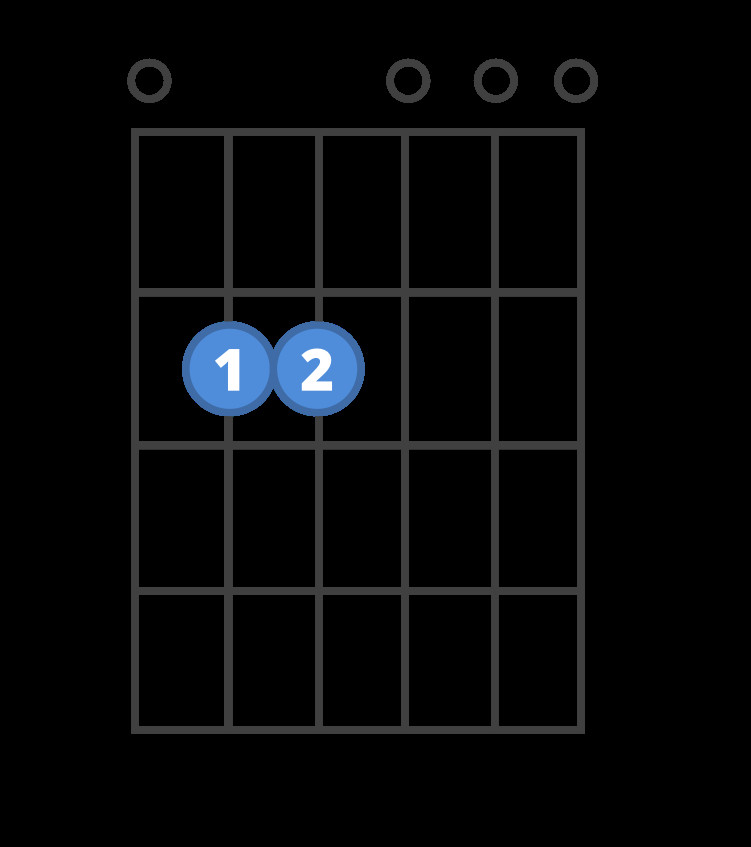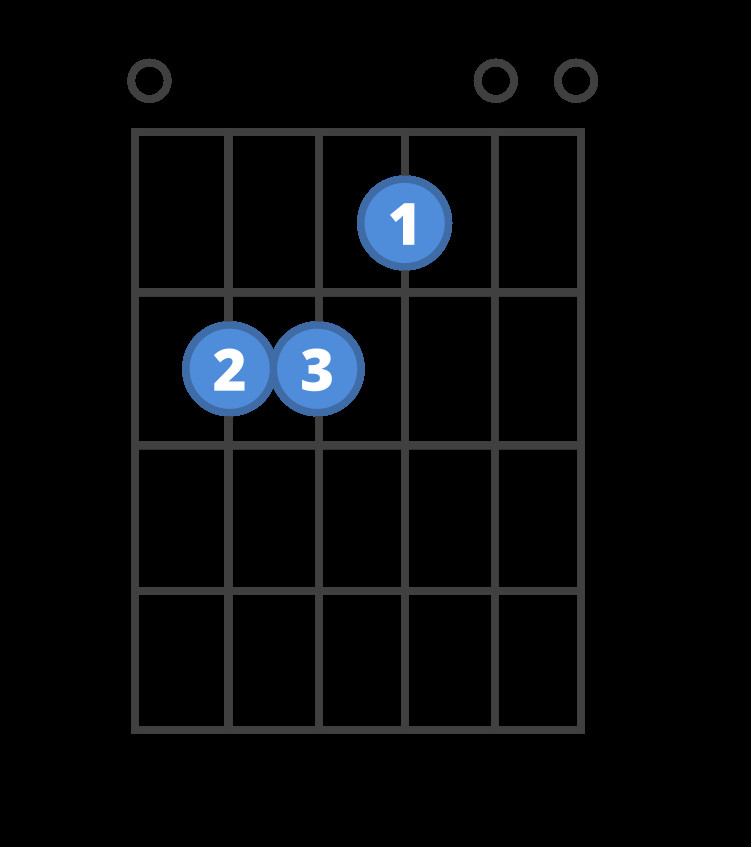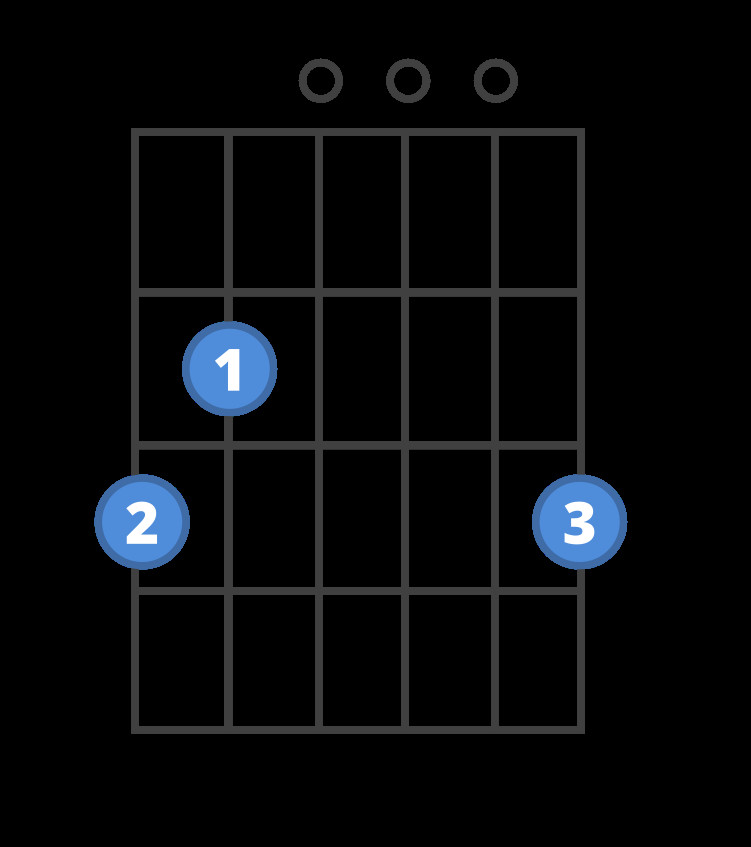The E minor (Em) guitar chord is a foundational chord for any aspiring guitarist. Its simplicity and versatility make it one of the first chords beginners often learn, and for good reason. The Em chord appears in countless songs across genres, from pop and rock to folk and blues. Learning to play the Em chord smoothly and accurately will unlock a vast repertoire of music and significantly enhance your guitar playing journey.
 Diagram of the Em guitar chord.
Diagram of the Em guitar chord.
Why the Em Chord is a Must-Know for Guitarists
The E minor chord is more than just an easy chord to learn; it’s a cornerstone of guitar playing. Here’s why mastering the Em chord is essential:
- Beginner-Friendly: Requiring only two fingers, the Em chord is incredibly accessible for beginners. This ease of play provides early success and encourages continued learning.
- Extremely Common: You’ll find the Em chord in a massive number of popular songs. From classics to contemporary hits, knowing Em opens up a world of play-along opportunities.
- Versatile Sound: The minor tonality of the Em chord brings a touch of melancholy or introspection, adding depth and emotion to your playing. It pairs beautifully with major chords, creating dynamic and interesting chord progressions.
- Building Block for More: The finger placement for Em is close to other essential chords like C major, A minor, and D major. Mastering Em makes transitioning to these chords much easier, accelerating your overall chord vocabulary.
Step-by-Step Guide to Playing the E Minor Chord
Let’s break down how to form the Em chord on your guitar. Follow these simple steps, and you’ll be playing it in no time:
Finger Placement for Em
- Identify the Strings and Frets: We’ll be focusing on the thickest strings of your guitar. The fifth string is the ‘A’ string (second thickest), and the fourth string is the ‘D’ string (third thickest). The second fret is the metal bar two positions away from the headstock of your guitar.
- Place Your Second Finger: Position your second finger (middle finger) on the fifth string (A string) at the second fret. Press down just behind the metal fret, ensuring the string rings clearly.
- Place Your Third Finger: Now, place your third finger (ring finger) on the fourth string (D string) at the second fret. Position it next to your second finger, again pressing firmly behind the fret for a clean sound.
- Check Your Finger Position: Ensure your fingertips are pressing down the strings and not muting adjacent strings. Your first finger should be free and not touching any strings.
 Diagram of the Em guitar chord.
Diagram of the Em guitar chord.
Strumming and Sound Check
- Strum All Six Strings: Using your pick or strumming hand, gently strum all six strings of your guitar downwards.
- Listen for a Clear Sound: You should hear a clear, resonant E minor chord. If you hear buzzing or muted strings, check your finger placement. Make sure you are pressing down firmly enough and that your fingers are not accidentally touching other strings.
- Adjust as Needed: If any strings are buzzing, slightly adjust the position of your fingers until all six strings ring out clearly. Experiment with the pressure and angle of your fingers until you achieve a clean Em chord sound.
Em Chord vs. E Major Chord: Understanding the Difference
The E minor and E major chords are closely related, differing by just one note. Understanding this subtle difference sheds light on basic music theory and the character of major and minor chords.
 Chord diagrams side-by-side for Em and E major, highlighting the finger difference.
Chord diagrams side-by-side for Em and E major, highlighting the finger difference.
The diagram on the left shows the Em chord you’ve just learned. The diagram on the right illustrates the E major chord. Notice that the E major chord requires an additional finger on the third string (G string) at the first fret.
The Music Theory (Simplified):
The key difference lies in the third note of the chord. In an E major chord, this note is a G sharp (G#), creating a major third interval which gives major chords their bright, happy sound. In an E minor chord, this note is a G natural (G), creating a minor third interval, resulting in the minor chord’s characteristic sad or melancholic sound. Visually, on the guitar, this difference is achieved by either including (E Major) or omitting (E minor) the first finger on the G string.
Practice Tips for the Em Chord
Consistent practice is key to mastering any guitar chord. Here are effective practice techniques for the Em chord:
The On-Off Drill
This drill is excellent for memorizing chord shapes and building muscle memory:
- Form the Em Chord: Place your fingers in the Em chord position.
- Strum and Count: Strum the chord four times, counting to four with each strum (1-2-3-4).
- Release and Count: Take your fingers completely off the strings for four counts (1-2-3-4).
- Repeat: Immediately place your fingers back into the Em chord shape and repeat the cycle.
This on-off repetition helps your brain and fingers memorize the shape of the Em chord.
Chord Switching Practice
Once you can form the Em chord reliably, practice switching between Em and other beginner-friendly chords. Good chords to practice switching with include G major, C major, and D major.
- Switch Between Em and G: Practice moving smoothly between the Em chord and the G major chord. Strum Em four times, then switch to G and strum G four times, repeating this back and forth.
- Incorporate More Chords: Gradually add in C major and D major, creating simple chord progressions like Em-G-C-D or Em-C-G-D to practice more complex switching.
 Chord diagram for the G guitar chord, for chord switching practice.
Chord diagram for the G guitar chord, for chord switching practice.
Focus on smooth transitions between chords, minimizing pauses and maintaining a steady rhythm.
Songs to Practice with the Em Chord
Putting your Em chord into practice with actual songs is highly motivating and reinforces your learning. Many popular songs use simple chord progressions featuring Em, G, C, and D. Search online for song tutorials or chord charts using these chords and start playing along! This will help you develop your rhythm, timing, and chord switching skills in a musical context.
Further Explore Guitar Chords and Resources
Congratulations on learning the E Minor Guitar Chord! This is a significant step in your guitar journey. To continue expanding your skills, explore resources like ChordBank for a vast library of guitar chords, scales, lessons, and practice tools. Learning new chords, practicing regularly, and playing songs you enjoy are the best ways to progress and deepen your love for guitar.

